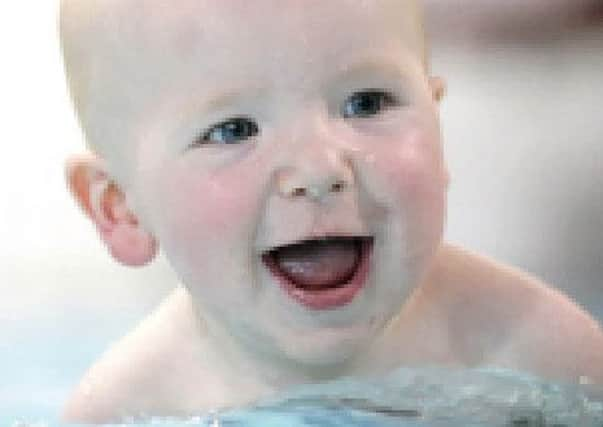Aiming to make a splash for the sake of safety


Would you say it’s not as important as being able to read or write or do you think it’s a scandal that so many are unable to do what is, arguably, an essential skill?
Whatever your view, the fact remains that swimming neatly sits into a range of boxes – fun, healthy, social, competitive, not to mention life-saving.
Advertisement
Hide AdAdvertisement
Hide AdBut another truth is that, despite the benefits of swimming, it’s not part of the school curriculum here – as it is in England and Wales.
This is a continuous bugbear for Scottish Swimming, the national governing body which oversees all the different disciplines of the sport in Scotland.
But the organisation is not going to stop kicking to promote, develop and encourage participation in swimming.
Using its strong relationships with local authorities, community trusts and other aquatic providers, it’s implementing its new national framework.
Advertisement
Hide AdAdvertisement
Hide AdThe strategy, which supports aquatic providers to deliver quality learn-to-swim programmes, is being adopted by 17 local authorities and trusts.
It will eventually be rolled out across the country, benefitting 100,000 children.
The new framework provides a clear set of national standards and allows parents to follow how their child is progressing.
It strives to provide quality teaching, guiding children from their early years to being club-ready.
Advertisement
Hide AdAdvertisement
Hide AdFiona Paterson, participation programme manager at Scottish Swimming, said: “We reviewed our old learn to swim programme, looked at extra criteria and consulted a variety of partners to develop a more holistic approach for Scottish Swimming.
“The new national framework is a fully inclusive pathway of moving into the clubs and is based on teaching life skills.
“One of the problems we identified was that when the children progress, there are huge changes to their lessons time and day.
“Everyone has busy lives so what we wanted to do was make that progression as easy as possible, allowing the child to progress but stick to the same day and time. Parents and children are hugely busy and so working with them and making that progression easy was key.
Advertisement
Hide AdAdvertisement
Hide Ad“Being inclusive is about working with local authorities and trusts to bring children with disabilities, where possible, into the mainstream programme.
“The feedback we have had so far has been very positive.
“North Lanarkshire Leisure, for example, has been running it for a year and experienced a growth in numbers of around a couple of thousand.”
Rolling out the programme nationally is anticipated to take until 2021 but, so far, the uptake has been better and quicker than anticipated.
With 17 local authorities working with the education programme, teachers are being brought up-to-date about the changes and the response so far has been positive.
Advertisement
Hide AdAdvertisement
Hide Ad“Strong relationships with the local authorities and trusts have been a huge support to implementation,” Fiona added.
Forbes Dunlop, CEO of Scottish Swimming, said: “At any given time, there are 100,000 children learning to swim. We have half of the country signed up, including some of the bigger authorities, so we have in excess of 50,000 children on the new framework.”
He added: “The latest figures show 40 per cent of children still can’t swim on leaving primary school.
“We think it’s a disgrace and have put a lot of time and effort into talks with key people that swimming should be part of the school curriculum, as it is in England and Wales.
Advertisement
Hide AdAdvertisement
Hide Ad“But the reality is that it is still a community-based programme and you generally find that those children who can’t swim have parents who either can’t afford to take part or see it as less of a priority.
“With school swimming we know that children have had an introduction to water. Even if they have just taken part three or four times, they feel more confident, are less nervous and more likely to go back, maybe with their pals.
“We still have that fight and ongoing dialogue with the Scottish Government.
“There is, however, some fantastic work going on in local authorities and schools.”
Advertisement
Hide AdAdvertisement
Hide AdWith the new framework, Scottish Swimming is still focused on its three-strand goal for the future – learning to swim, making swimming sustainable through its strong club network and building on performance on an international stage.
For more details, visit website